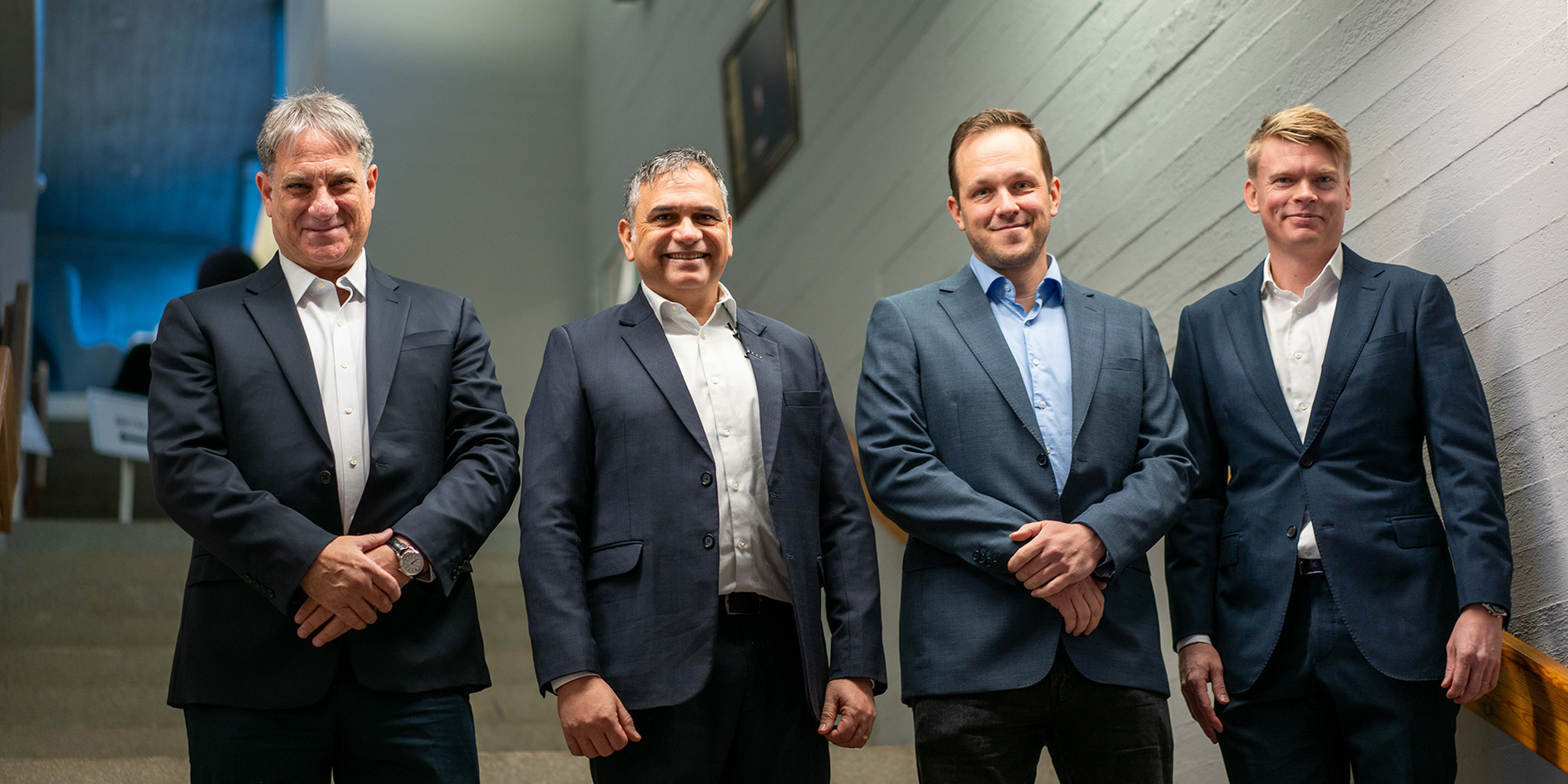Have you noticed that today’s leaders are always proclaiming their humility? Humility seems to be fashionable. This is probably because servant leadership is an increasingly popular leadership method. At the heart of the method is humility and putting the interests of others before one’s own.
Although claiming to be humble doesn’t necessarily mean a person has internalized servant leadership, it shows that they see humility as an appropriate and essential quality for managers.
Do I have to be a damn servant as well?
At first, leadership and humility sound like opposites. The traditional authoritarian leadership stereotype combines confidence, power struggles, and quick conclusions.
Do I have to be a damn servant as well?
"The term is provocative. Even my own supervisor has asked that question," says Jari Hakanen, Research Professor at the Finnish Institute of Occupational Health. Hakanen has studied servant leadership for a long time and gives training courses on the subject.
According to him, the provocation is deliberate.
Serving employees is not a new emerging trend
The concept of servant leadership was born more than fifty years ago in the United States, at a time when bell curves, Taylorism, and top-down management prevailed. The manager was typically supposed to know everything, and the employees’ only purpose seemed to be to serve the manager and the manager’s career and employer.
The idea of a leader serving their subordinates and not vice versa challenged the prevailing authoritarian and hierarchical organizational culture. Actually, the concept of servant leadership is thousands of years old – Jesus, as described in the Bible, was a servant leader.
In 1970, Robert K. Greenleaf (1904–1990), an American working for the conglomerate AT&T, updated the leadership model when he published his now classic essay, The Servant as Leader.
Greenleaf was inspired by German author Herman Hesse’s short story: Journey to the East, in which a group of historical figures travel east in search of the ultimate truth. The group is hit by a crisis when Leo, a servant who was with them, disappears. It gradually becomes clear that Leo was in fact the leader of the group. No one noticed because Leo served the others without drawing attention to himself.
It’s the first management theory that takes people’s well-being as its point of departure. This then leads to good quality work and results.”
For Greenleaf, the prerequisite for servant leadership was a genuine desire to serve, to put others before oneself. The best leaders listen, persuade, use their intuition, and plan ahead.
The popularity of Greenleaf's method grew slowly for decades until the 2000s when interest in it almost exploded. Academic research only became interested in servant leadership in the 2000s. Today, it is a popular research topic.
Hakanen talks about servant leadership as a broad rainbow theory. Several versions of it have sprouted in the form of consultants’ products.
"It’s the first management theory that takes people’s well-being as its point of departure. This then leads to good quality work and results."
|
|
| Research Professor Jari Hakanen dispels the myth that tough, authoritarian leadership is all that works in difficult times. "It was sometimes believed that servant leadership was only for the good times. But it also seems to work really well in difficult situations, helping people actively adapt to change in times of uncertainty." Photo: Annukka Pakarinen |
Building high-performance teams: Embrace strengths, not weaknesses
Management by perkele is a familiar term to Finns. It means military-style, authoritarian leadership.
Command-and-control leadership still exists, but it’s no longer fashionable. Leadership has undergone a big change. Now, leaders have to be whole, human people. As well as being humble, they have to be genuine, courageous, and forgiving – at least if they profess to be a servant leader.
Hakanen considers lack of leadership to be a bigger problem in modern-day management than yelled-out commands.
"Organizations have reduced management. There are fewer managers than before, and their time is now taken up by non-management tasks such as documentation and reporting. Then, in the evenings, they realize that they didn't have time to meet people."
Servant leadership involves the idea of growth at the level of the employee, the team, and the whole organization.
There are fewer managers than before, and their time is now taken up by non-management tasks"
"The most important role of management is to help people succeed in their work, thus promoting their well-being and professional growth. In this sense, it’s a service task."
The hallmark of servant leadership is that no one is forced to do anything. When difficult situations arise, they are talked through: persuasion is one of the hallmarks of servant leadership. The manager can ask: how are you, how can I help, what do you need?
Hakanen has used basketball coach Henrik Dettmann as an example of servant leadership. When Dettmann became the coach of the Finnish national team, he changed the sign on his door to "servant".
A servant leader focuses on employee's strengths rather than their weaknesses. Dettmann's view is that focusing on weaknesses produces a dull team. It’s better to focus on strengths, develop them, and arrange as many tasks as possible in ways that enable the employee to succeed. A servant leader understands that people are not result-producing machines.
In successful servant leadership, everyone in the organization is a servant to each other.
A servant leader is successful in their job if there is a sense of trust and safety in the organization. It affects how well employees work together, and how well they work together, in turn, depends on how well the organization is doing.
The benefits of servant leadership are also evident in the company’s profit
Learning new things and constant change are the default settings of modern work. Learning is demanding, but it’s also rewarding. Research shows that learning is one of the biggest sources of work engagement. When people are doing well, they learn new things and craft their jobs.
Job crafting is when the employee takes the initiative to find solutions to the challenges they face and to facilitate their work.
Research shows that it is servant leadership and the safe and inspiring atmosphere it creates that makes people take the initiative to craft their jobs. It’s vital for organizations in this era of accelerating change.
Why should I share my idea at work if no one thanks me and the boss takes credit for it?"
In the background looms the idea of a social trade-off.
"Why should I share my idea at work if no one thanks me and the boss takes credit for it? But when they get recognition, that's when people share."
A culture of servant leadership fosters social courage at the workplace. Social courage is not about being social but about having the courage to raise grievances. Addressing grievances is less of an issue in a servant leadership climate than in an authoritarian culture. This is logical, as the aim of servant leadership is to promote the common good in the workplace. In an authoritarian culture, grievances are more likely to remain hidden, and the whole organization suffers.
Research shows that servant leadership results in organizational commitment, job satisfaction and employee retention. And through this, it shows in the company’s profits.
|
|
Servant leadership isn’t just for the good times
Hakanen stresses that servant leadership doesn’t in any way diminish leadership. A servant leader is not a mindless wimp but a solid visionary who can communicate the purpose of the organization to their team with crystal clarity.
"There’s a misconception that servant leadership is not proper leadership. It uses power but shares this power, and it isn’t coercive. And the power is used for everyone’s benefit."
Hakanen likens servant leadership to the “pehtoori”, or farm manager, a familiar character in old Finnish films. "The pehtoori looked after the property and the people and made sure that everything ran smoothly. He took care of everything."
The shortage of skilled workers has increased the popularity of people-centered management.
In the health sector, for example, it’s become obvious that people need to be managed in a new way to keep them in their jobs and make them feel that their work is meaningful. Hakanen describes how a care worker walks through the door of a retirement home and knows almost immediately whether it's worth staying.
"So yes, you should pay attention to what it's like to work in an organization."
For young people, authoritarian leadership can be a real shock.
"How can we get young people on board? It's not about salary and or more money; it’s about paying attention to the quality of working conditions."
Servant leadership is suitable for all types of organizations across sectors and hierarchies.
It was sometimes believed that servant leadership was only for the good times. But it also seems to work really well in difficult situations."
“A study of servant leadership in China has shown that it works there just as well," Hakanen says. He sees servant leadership as a great link between a strong top-down culture and a bottom-up culture of self-management.
"The idea is that people are able to manage themselves safely."
Hakanen dispels the myth that tough, authoritarian leadership is all that works in difficult times.
It was sometimes believed that servant leadership was only for the good times. But it also seems to work really well in difficult situations, helping people actively adapt to change in times of uncertainty. “Good leadership and respect from the work community are essential when times are tough. Otherwise, people tend to go into a lonely survival mode."
Those who perceive their manager as a servant feel better at work
Hakanen and Specialized Researcher Janne Kaltiainen from the Finnish Institute of Occupational Health have studied how servant leadership can improve job performance (Fostering task and adaptive performance through employee well-being: The role of servant leadership, Business Research Quarterly, 2020).
Their sample consisted of 34 Finnish municipalities and 2453 employees. The researchers found that the work engagement of employees who perceived their managers as servants improved, and burnout cases decreased. It is noteworthy that this was particularly the case when organizations were going through changes. Employee performance improved when employees’ mental well-being was in good form.
The survey respondents were asked to rate their leaders’ empowerment, standing back, accountability, courage, authenticity, humility, stewardship, and interpersonal acceptance. When employees perceived their leader as a servant leader, stress remained under control, problems were solved creatively, reactions were effective, and relationships remained good during changes.
The study confirmed the core of servant leadership theory: If you want your organization to benefit and succeed, you must first invest in the well-being of your employees.
In today's organizations, we’re so busy that we don't stop to reflect on things. This prevents us from thinking."
How can an organization adopt a culture of servant leadership?
As it involves a cultural change, it can’t happen overnight. Everyone has to be involved.
Hakanen answers by asking:
"What does it mean for managers? What about employees?"
"There are still employees who need concrete guidance. What does it mean when you give employees more space? How do you preserve the feeling of safety?
It is also important to agree on the steps to be taken. Sometimes, you have to stop and take stock.
Hakanen has found that this is surprisingly difficult.
"In today's organizations, we’re so busy that we don't stop to reflect on things. This prevents us from thinking."
|
|
Why is now the right time for servant leadership?
In the future, your work colleagues may be machines and your career may last as long as 60–70 years. Servant leadership is well suited to the changing nature of today’s work life, says Research Programme Director Hertta Vuorenmaa.
The factory shop floor, the labor movement, and the eight-hour working day. Virtual reality, avatars, and digital natives. International trade, urbanization, and commuting. Industry, services, and digitalization. The climate crisis and biodiversity loss. Democracy, capitalism, and the Nordic welfare state.
They are exactly the kind of challenges that servant leadership, at its best, addresses."
Work is always done and managed in a specific context. That's why different leadership styles work at different times.
"When I look at the challenges that emerge in our research data, I quickly realize that they are exactly the kind of challenges that servant leadership, at its best, addresses," says Hertta Vuorenmaa, Research Director of the Academy of Finland’s Future of Work project at Aalto University School of Business, Lecturer and researcher of work life. She is also the Chair of The Finnish Association of Work Life Research.
Vuorenmaa and her colleagues have studied the challenges of working life by interviewing HR managers in 30 large Finnish companies.
Businesses today are wondering how to approach the complex and rapidly changing situation and what their organizations need to survive the turmoil.
The data makes it exceptionally clear that adapting to new things is everyone's business. This is where servant leadership has proven to be an effective tool.
The interviewees believed that the skills required are self-management; the ability to cope with change, analyze data, use digital tools, understand and collaborate with intelligent machines; high-level cognitive skills, digital content creation, the ability to take on multiple roles, coding, and design thinking.
People have to be made part of the change; otherwise, they won't commit.
Meta-skills, emotional skills, and interaction skills across devices are needed. During the pandemic, it became obvious that interaction in remote meetings was different from that in face-to-face meetings.
"New technologies are changing faster than ever and cognitively challenging us in different ways to before. New technology is changing work significantly. However, this debate has always arisen in industrial revolutions," Vuorenmaa says.
"Managing change caused by technology is like dropping a stone in water. It’s not enough to think about the first and second rings that spread in the water. It has an impact on the whole organization on every person’s work. People have to be made part of the change; otherwise, they won't commit."
|
|
| According to Hertta Vuorenmaa, pioneering organizations give inclusion a lot of thought, i.e., how everyone can become part of the new way of doing things. "Technology is useless if employees don't embrace it and start using it." Photo: Venla Helenius |
Managing work should be built on a sustainable foundation
According to Vuorenmaa, friction arises because of the definition of effective work, and it should be reconsidered. The prevailing definition is from the beginning of the industrial age, as are the structures in which today's work is done. They worked then, but now they’re slowing down people’s adaptation to the new reality.
We already know too well that eight hours on a computer is not effective work. And still, we hold on to these old structures.
"Someone asked me if this is not all a bit political. Well, of course, it is."
Work involves a huge number of emotions, and because of its institutional nature, changes can feel threatening.
"Technology raises a big question: Will I lose my job to a robot? And will I learn all these new things? The range of emotions goes from extreme enthusiasm to extreme shame."
Servant leadership aims to create a safe work environment that radiates trust. According to Vuorenmaa, pioneering organizations give inclusion a lot of thought, i.e., how everyone can become part of the new way of doing things.
"Technology is useless if your employees don't embrace it and start using it."
Organizations are too quick to believe that "everyone" speaks English and is a software whiz.
"In one organization, no one used the tools. It turned out that the employees didn't know enough English to be able to use them. The organization arranged language courses, and the employees started using the tools and felt enlightened."
Vuorenmaa caricatures how a management team gets excited about some new technology, practices it with a consultant, and then forgets to pass it on through the organization.
Among the companies, Vuorenmaa and her colleagues interviewed, the pioneers have "always" made learning part of their work. Their mindset is that your job involves learning new things, and this applies to all levels and professions in the organization.
Everything should be thought of and managed as a marathon.”
The key question is how to get those who are not keen learners to learn. Does the employee need help learning, or can they start learning independently as part of their job?
"There are so many ways to learn." Vuorenmaa talks about lifelong learning as an organic process. She believes it would make work life more socially sustainable.
Endurance is crucial because, according to the Stanford Centre for Longevity, working careers will continue to diversify and grow in length, up to 70 years.
"So, everything should be thought of and managed as a marathon."



























